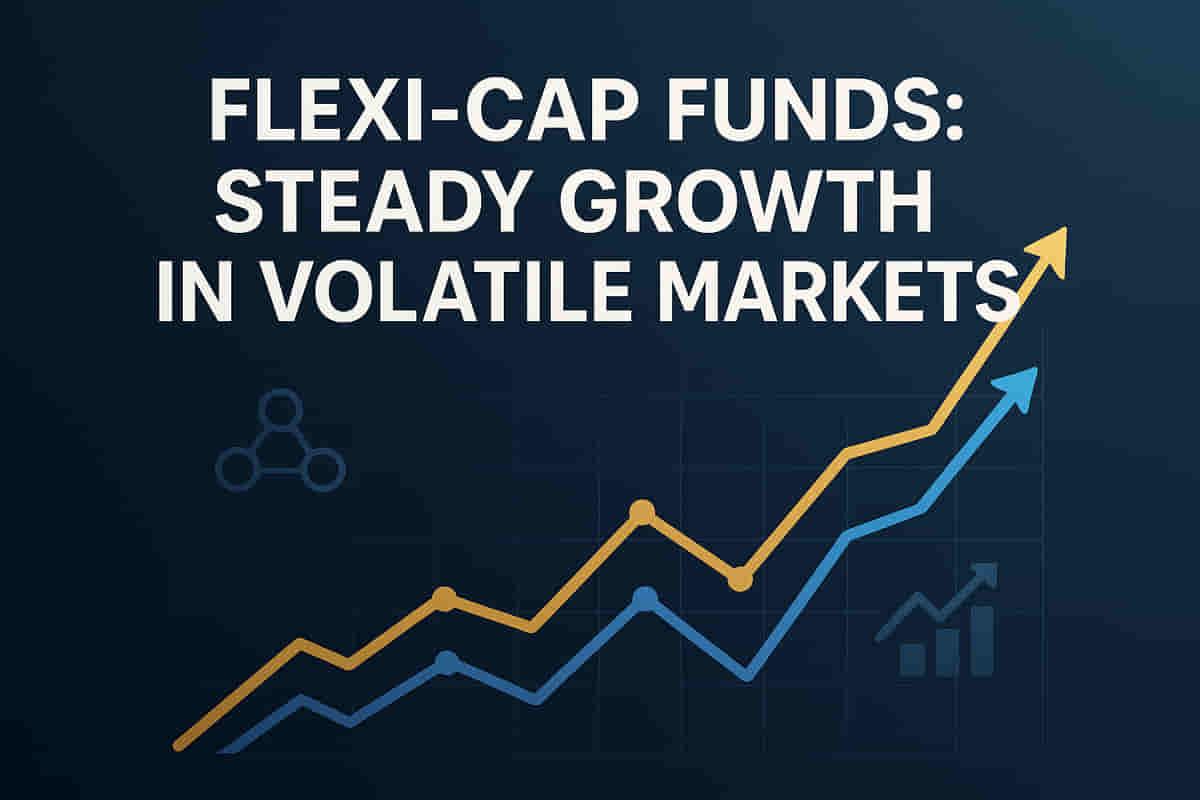Flexi-Cap Funds Show Resilience and Strong Long-Term Growth, Outperforming Benchmarks
Mutual Funds
|
30th October 2025, 11:21 AM

▶
Short Description :
Detailed Coverage :
Flexi-cap funds are a type of diversified equity mutual fund that allows fund managers to invest in companies of any market capitalization – large, mid, or small – without any fixed allocation limits. This inherent flexibility enables managers to dynamically adjust their portfolio based on market conditions, shifting exposure to where they see the best risk-reward balance, such as increasing large-cap allocation during volatility or moving to mid/small-caps for growth opportunities.
Unlike multi-cap funds, which SEBI mandates must maintain at least 25% allocation in each of large, mid, and small-cap segments, flexi-cap funds enjoy complete freedom in asset allocation. Fund managers can also utilize derivatives like index futures or options for tactical hedging to cushion volatility, though this is usually limited.
Assessing the performance of flexi-cap funds is best done over a complete market cycle, ideally a decade, to understand their consistency. Key metrics include the Compound Annual Growth Rate (CAGR), which indicates sustained wealth creation, the expense ratio, and comparison against their benchmark index.
The article highlights five top-performing flexi-cap schemes over the past decade: 1. **Quant Flexi Cap Fund**: Managed by Quant Mutual Fund, it has delivered a 19.9% CAGR over 10 years, outperforming the NIFTY 500 TRI (13.5%). 2. **Parag Parikh Flexi Cap Fund**: Managed by PPFAS Mutual Fund, it achieved an 18.85% CAGR over 10 years against a 13.5% benchmark. It also invests in overseas equities. 3. **JM Flexicap Fund**: Managed by JM Financial Mutual Fund, it posted an 18.19% CAGR over 10 years, beating the BSE 500 TRI (13.3%). 4. **HDFC Flexi Cap Fund**: Managed by HDFC Mutual Fund, one of the oldest in the category, it delivered a 17.04% CAGR over 10 years versus the NIFTY 500 TRI (13.5%). 5. **Edelweiss Flexi Cap Fund**: Managed by Edelweiss Mutual Fund, it achieved a 16.29% CAGR over 10 years, outperforming the NIFTY 500 TRI (13.5%).
These funds suit investors with a moderate-to-high risk appetite and a long-term horizon, seeking diversified equity exposure managed dynamically.
Impact: This news is highly relevant for Indian investors actively participating in the mutual fund market. The consistent performance of flexi-cap funds demonstrates their effectiveness as an investment vehicle for long-term wealth creation, potentially influencing investor allocation strategies. The detailed analysis of specific funds and their performance metrics provides actionable insights for investment decisions. The resilience shown by these funds can boost confidence in actively managed equity schemes.
Impact Rating: 8/10
Difficult Terms: * **Flexi-cap fund**: A type of mutual fund that can invest in stocks of companies of any size (large, mid, or small-cap) without any mandatory allocation limits. * **Large-cap companies**: Companies with a very large market capitalization, generally considered more stable and less volatile. * **Mid-cap companies**: Companies with a medium market capitalization, offering potential for higher growth than large-caps but with moderate risk. * **Small-cap companies**: Companies with a small market capitalization, often having high growth potential but also higher risk and volatility. * **Benchmark**: A standard or index against which the performance of a fund or investment is measured. For example, NIFTY 500 TRI. * **CAGR (Compound Annual Growth Rate)**: The average annual growth rate of an investment over a specified period, assuming profits are reinvested. * **Expense ratio**: The annual fee charged by a mutual fund company to manage the fund, expressed as a percentage of the fund's assets. * **Portfolio turnover ratio**: A measure of how frequently a fund buys and sells its holdings; a high ratio indicates active trading, while a low ratio suggests a buy-and-hold strategy. * **NAV (Net Asset Value)**: The per-share market value of a mutual fund. It is calculated by taking the total value of the fund's assets, subtracting its liabilities, and dividing by the number of outstanding shares. * **AUM (Assets Under Management)**: The total market value of all assets that a fund manager manages on behalf of its clients. * **Derivatives**: Financial contracts whose value is derived from an underlying asset, such as stocks, bonds, or indices. Used for hedging or speculation. * **Hedging**: A risk management strategy used to offset potential losses or gains that may be incurred by a companion investment.